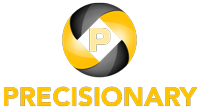Music Therapy, the Harp, and the Brain
- Original post date:
Share on social
“Music is the medicine of the mind” — John A. Logan
Think of a time when you listened to music and it influenced the way you felt and your emotions. Did you feel uplifted and calm or more alert and energetic? For hundreds of years, music has had the ability to impact our emotional regulation, cognition, and movement. With increasingly sophisticated neuroimaging techniques, we are now able to understand more human responses to music, and how music therapy can help heal the human body.
Music Therapy
Music therapy interfaces with neuroscience on multiple levels and can have a profound impact on diverse clinical populations. We are drawn towards music as something audibly pleasant. On a molecular level, music activates our dopamine reward system—the same system involved in eating, sex, and drug use. There are a host of brain regions implicated in musical activities (Figure 1) that have been summarized using over twenty years of music neuroscience studies (Sarkamo et al, 2013). Thus, there are specific brain regions highly selective to music.

We want to feature here one of our Precisionary Scientific Sales Consultants, Stephanie Tudino! Many of our customers have worked directly with Stephanie. In her spare time, Stephanie plays the harp (Figure 2), an enchanting instrument that is actually used in vibroacoustic harp therapy (VAHT) for pain management and healing in clinical settings including hospitals, nursing homes, and hospices. As a therapeutic instrument, the harp’s sound can synchronize to a patient’s physiological rhythm, and paired with its aesthetically pleasing form, helps to provide distraction and relief from anxiety and pain. Controlled studies have shown that live, bedside harp music is beneficial in reducing pain, stabilizing vital signs, and inducing deeper sleep (Figure 3).


While there is ongoing research for music therapy and neuroscience, as well as therapeutic harp music and the healing process, there is no doubt that music plays some sort of role on the human body.
References:
- Koelsch S. A neuroscientific perspective on music therapy. Disorders and Plasticity: Ann. N. Y. Acad. Sci. 2009;1169:374-384.
- Aragon D, Farris C, Byers J. The effects of harp music in vascular and thoracic surgical patients. Altern Ther Health Med. 2002;8(5):52-60.
- Briggs T. Live harp music reduces anxiety of patients hospitalized with cancer. Harp Ther J. 2003;8(4):1,4,15.
- Sand-Jecklin K, Emerson H. The impact of a live therapeutic music intervention on patients’ experience of pain, anxiety, and muscle tension. Holist Nurs Pract. 2010;24(1):7-15.
- Williams S. Harp beat affects heartbeat. Harp Ther J. 2006;11(1):1,12.
- Staneslow S. Live music lulls newborns and slows heart rates. Harp Ther J. 2006;11(1):14-16.
- McKee S. Gentle musings: assessing effects of live harp music upon patients, family and friends, and staff at Massachusetts General Hospital’s Cancer Center. Harp Ther J. 2004;9(3):1,4-6,12-13,15.
Share on social
